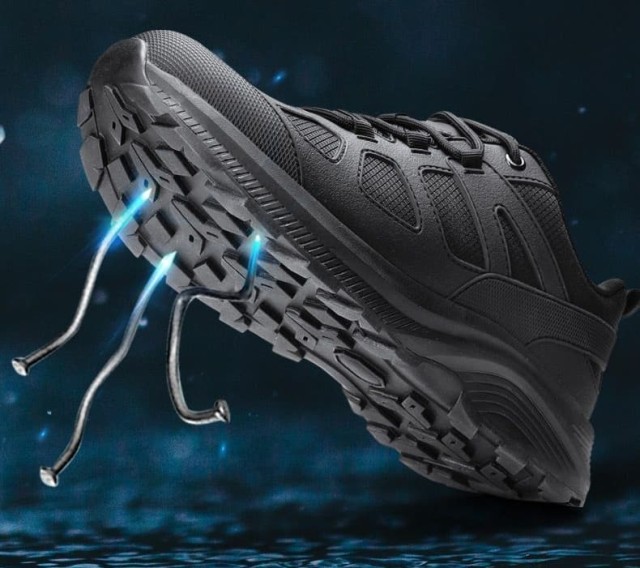Selecting the right work boot soles isn’t just about comfort—it’s a critical safety decision. The wrong material or tread design can lead to slips, fatigue, or even catastrophic injuries in extreme environments. This guide breaks down the science behind sole materials and hazard-specific designs, helping you match footwear to your workplace demands.
Choosing Work Boot Soles for Safety and Durability
Work boot soles must balance three key factors: material resilience, traction efficiency, and environmental adaptability. Research shows that over 60% of workplace foot injuries stem from inadequate sole selection. Here’s what matters most:
- Material Compatibility: Heat, chemicals, and abrasion demand different polymer blends.
- Tread Intelligence: Deep lugs aren’t universally better—mud, oil, and concrete require distinct patterns.
- Industry Benchmarks: Construction sites prioritize puncture resistance, while metalworkers need molten-metal splash protection.
For bulk buyers like distributors, prioritizing these factors reduces liability risks and worker compensation claims.
Heat-Resistant Materials: From Rubber Compounds to Advanced Polymers
Not all soles withstand extreme heat equally. Two dominant materials dominate the market:
-
Vulcanized Rubber
- Pros: Superior flexibility and slip resistance, ideal for uneven outdoor terrain.
- Cons: Degrades faster than PU under constant high heat (e.g., foundry work).
-
Polyurethane (PU)
- Pros: Retains shape under repetitive stress, common in urban industrial settings.
- Cons: Less flexible in sub-zero temperatures.
Case in point: A 2023 study comparing rubber and PU in steel mills found PU soles lasted 40% longer near furnaces but underperformed in oily, wet conditions.
Pro Tip: For chemical exposure, PVC soles offer budget-friendly waterproofing, though they lack the abrasion resistance of rubber or PU.
Tread Engineering: Balancing Grip, Drainage, and Debris Resistance
Tread design is a silent safety hero. Consider these patterns:
- Multi-Directional Lugs: Prevent mud/snow buildup (common in logging boots).
- Shallow Wave Patterns: Enhance oil/grease traction for auto mechanics.
- Channeled Grooves: Redirect water in wet environments (e.g., fisheries).
A construction firm in Texas reduced slip incidents by 30% after switching to boots with self-cleaning treads that expelled gravel automatically.
Industry-Specific Solutions: Case Studies in Construction and Metalworking
Construction Sites
- Need: Puncture-proof midsoles + electrostatic dissipation.
- Solution: Steel shanks with carbon-fiber reinforced soles.
Metalworking
- Need: Metatarsal guards + heat-reflective outsoles.
- Solution: Aluminized soles reflect radiant heat up to 500°F.
For bulk procurement, 3515’s customizable sole options let distributors tailor orders to regional hazards—whether it’s Arctic-grade flexibility or acid-resistant composites.
Ready to Equip Your Workforce with Smarter Footwear?
3515 specializes in manufacturing work boots engineered for extreme environments. As a trusted partner for distributors and bulk buyers, we deliver:
- Hazard-Specific Designs: From oil rigs to freezer warehouses.
- Scalable Production: Custom sole formulations for large orders.
- Compliance Assurance: Meets ASTM F2413-18 and ISO 20345 standards.
Contact 3515 today to discuss sole solutions that reduce injuries and boost productivity. Because when feet are protected, work flows smoother.
Related Products
- Durable Leather Work Boots Wholesale Manufacturer & Custom Factory
- Wholesale Durable 6-Inch Work Boots | Custom & Private Label Manufacturer
- Custom Wholesale Leather Safety Boots Direct Factory Manufacturing
- Wholesale Durable Safety Boots | Custom Steel Toe & Puncture-Resistant Manufacturing
- Durable Steel Toe Safety Boots Wholesale & Custom Manufacturing
Related Articles
- How Work Boot Materials Directly Impact Workplace Safety and Productivity
- How Work Boot Upper Materials Prevent Foot Injuries and Boost Comfort
- How Work Boot Heel Design Impacts Job Performance and Safety
- How Work Boot Safety Features Counteract Industry-Specific Workplace Hazards
- How Work Boot Materials and Technologies Shield Against Cold Weather Hazards



















